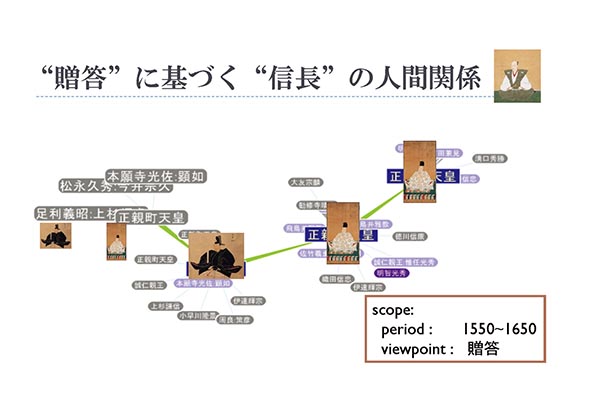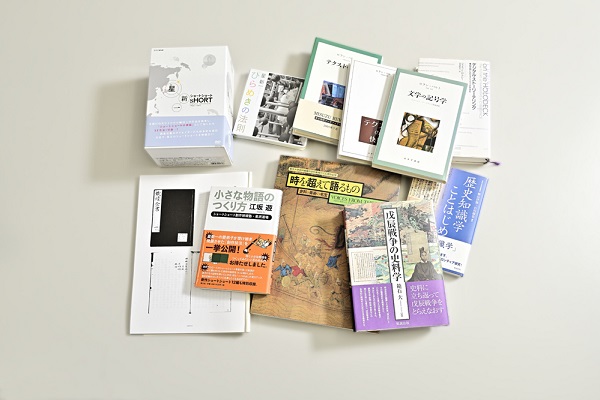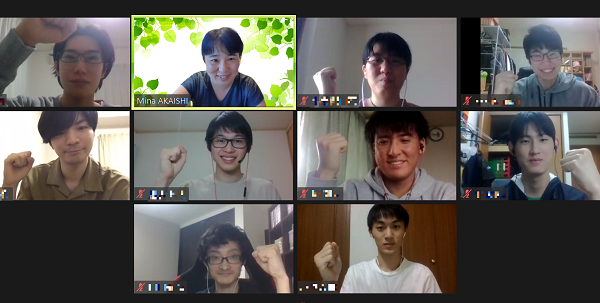reseach
Information retrieval mechanism focusing on narrative structure
Mina Akaishi, Professor
Department of Computer Science, Faculty of Computer and Information Sciences
Posted Nov.16,2020
Faculty Profile
Aiming at enhanced knowledge utilization, Professor Mina Akaishi studies data management methods.
She is developing innovative processes, such as for schematization to organize verbal relationships in a given text.
Seeking to invent effective alternatives to keyword search
My long-term research activities are related to database processing, which generally aims to manage huge volumes of data to enable effective information retrieval.
The most common method of information retrieval is done by specifying keywords. However, it is sometimes difficult to find effective keywords, particularly for something unknown or for abstract ideas. Is there any good alternative method to keyword search? This question was the starting point for my pursuing this theme.
It is a given fact that computers do not understand the meaning of texts created by humans. Humans can tell the difference between a children’s story and a user manual, but computers recognize any text as simply a sequence of characters. Therefore, to enable computer automation of text processing, it is essential to invent rules for automatically breaking text information into patterns. For this purpose, I have looked at narrative structure.
Narrative structure, put very simply, consists of different levels of elements, including characters, the smallest element. Characters are assigned to act together to compose events, the setting and the story. Finally, a number of stories can be brought together to present a grand narrative, often a model view of the world, as represented by ancient mythology. I thought that this literary element structure could be applied to text data analysis, looking to create rules for breaking text information into a set of patterns effective for many types of literature.
The key is to treat verbal elements in the text as “characters” and the entire passage as an “event.” Then, a schematization process is introduced to present relationships between the verbal elements, comparable to the relationships between the characters.
Schematization allows easier textual breakdown and reconfiguration, enabling flexible data manipulation, specifically for extracting verbal elements linked to specified words.
Look at Figure 1. This shows the result from extracting recorded descriptions of Oda Nobunaga giving and receiving gifts, based on schematized historical facts from the 100-year period between 1550 and 1650. Historical records on gift-giving and receiving help reveal who were given important political positions, a key to understanding the power relationships of the time.
In order to increase the effectiveness of this story structure-based technique, I will conduct numerous verifications and dig into this theme more deeply.

Figure 1: Relationships between Oda Nobunaga and various emperors based on gift-giving/receiving practice: Records related to Oda Nobunaga giving and receiving gifts extracted to reveal political relationships between important persons of the time
Exploring approaches to enhanced knowledge utilization through bridging the gaps between the humanities and sciences
I have expanded my activities to many research fields through participating in various projects including a program for AI-powered computerized story writing. The types of text adopted range broadly from literary works such as Greek mythology to Japanese history, news articles, and artificial satellite design minutes. Although being a science researcher in information processing, I am probably more engaged in text data handling than numerical data processing.
Researchers in the humanities and sciences tend to have different values and views, but I believe the two parties can join together to effect interesting “chemical changes.” Given the advantage of being based in Hosei University which has 15 undergraduate faculties, I’m interested in collaborations with members and students of other faculties. Through such collaborations, I hope I can help bridge the gaps between the humanities and sciences.
My research efforts are directed towards enhanced utilization of knowledge from many different sources. One major goal of the efforts is about building systems for museums, thus making an academic contribution to cultural fields.
Specific plans include creating dynamic exhibition systems to offer free-routing personalized museum tours, guide programs with recommendation features, and other interesting options designed to provide new museum experiences. My aspiration is to invent such systems to encourage active involvement in learning in museums, looking to increase the enjoyment of acquiring knowledge.

Collections of texts to be used as materials for data analysis: Consist of a diversity of literature, ranging from the complete works of Shin’ichi Hoshi, containing 1000-plus titles, to historical records.
Helping build a better future for people and society as both a researcher and a teacher
I appreciate the members of the Faculty of Computer and Information Sciences for being quick at making decisions and being open to change. From my earliest days at Hosei, many faculty members supported me taking up varied challenges, giving words of encouragement. I truly thank them for their kindness.
Students are generally decent and modest, indeed. The problem is that I often find them too much so. Students should use the learning opportunities offered by the university in earnest to develop practical wisdom, to be able to play an active role in society. I want to see them develop the ability to pave the way for themselves, believing in their future potential. For this purpose, I encourage students to exert self-reliant efforts to solve challenges, and avoid intervention more than necessary for monitoring.
For me, research and education are inseparable. In the past, I was trying to spend less time on teaching responsibilities to increase the hours for research as an eager young researcher. However, I came to recognize that what made me become a researcher was my teachers. This recognition has changed my attitude toward education. Now, spending time with students has become a precious occasion for education and research.
One of the important missions of education is to shape a better future for people and society. I am proud of being part of efforts to fulfill that mission.

Running classes and seminar programs online during the period when access to the campus was restricted to prevent novel coronavirus infection. Sharing with her students a vow to overcome “tele-campus” related issues.
Mina Akaishi, Professor
Department of Computer Science, Faculty of Computer and Information Sciences
Completed the doctor’s program for the Course of Electric Engineering at the Graduate School of Engineering, Hokkaido University. Doctor of Engineering. Served as assistant at Faculty of Informatics, Shizuoka University; assistant at School of Engineering, Hokkaido University; assistant professor, and associate professor at Research Center for Advanced Science and Technology, the University of Tokyo; associate professor at Historiographical Institute, the University of Tokyo; associate professor at School of Engineering, the University of Tokyo; and others before assuming the current position of professor at Faculty of Computer and Information Sciences, Hosei University in 2012.

